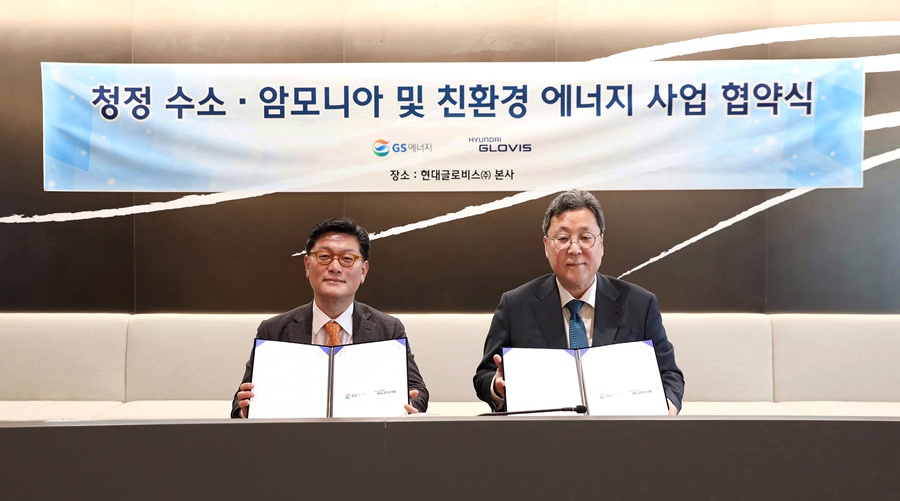
Hyundai Glovis is joining forces with a domestic energy company to target eco-friendly business areas such as clean ammonia and hydrogen.
Hyundai Glovis, a global SCM specialist, announced on the 27th that it had signed an MOU with GS Energy for ‘clean hydrogen, ammonia and eco-friendly energy business’. Earlier, at the signing ceremony held at Hyundai Glovis headquarters in Seongdong-gu, Seoul, officials from both companies, including Hyundai Glovis CEO Kyu-bok Lee and Vice President Kim Seong-won of GS Energy, attended and announced the beginning of collaboration.
Under the agreement, Hyundai Glovis will provide maritime transportation services for the clean ammonia and hydrogen projects promoted by the two companies, and GS Energy will be responsible for ammonia and hydrogen production and building related import terminals. In addition, the two companies agreed to cooperate for joint investment and development of demand for clean ammonia and hydrogen production.
Hyundai Glovis plans to preoccupy the eco-friendly gas transportation market with its maritime transportation capabilities. To this end, it has invested 200 billion won and is building two very large gas carriers (VLGC). The vessel is scheduled to be put into the global maritime transportation market after delivery in 2024 with a loading capacity of 86,000 cubic meters per vessel.
Hyundai Glovis’ VLGC has a cargo hold made of a special material, so it can transport not only LPG but also ammonia. Currently, it is known that around 20 VLGCs can ship ammonia worldwide (less than 10% of the total VLGC fleet).
Hyundai Glovis pays attention to ammonia transportation because it is presented as an alternative to liquefied hydrogen transportation. In order to transport and store hydrogen, gaseous hydrogen must be converted to liquid. Gaseous hydrogen has a limited transport capacity, and liquefied hydrogen (hydrogen in a liquid state at a cryogenic temperature of minus 253 degrees Celsius) has a low storage density and has not yet been commercialized.
Ammonia has emerged as a realistic alternative. Combining nitrogen with hydrogen makes ammonia. It is a method of transporting this ammonia form by sea and extracting hydrogen from ammonia at the demand place. Unlike liquid hydrogen, ammonia is relatively easily liquefied (at minus 33 degrees Celsius) and can store 1.7 times more hydrogen per unit volume, making it easy to transport in bulk.
Currently, ammonia is mainly used for fertilizer and petrochemical purposes, and is transported by small and medium-sized gas ships. When the era of mass transportation of ammonia arrives in the future, Hyundai Glovis VLGC is expected to become a vessel optimized for ammonia maritime transportation.
Hyundai Glovis also stands out in the field of liquefied hydrogen maritime transportation. Previously, it obtained basic certification, which is the first step in the development of a large liquefied hydrogen carrier for the first time in the world, from the Korean Register of Shipping and the Liberia Flag Bureau. This is the first case of certification for a large hydrogen carrier obtained through cooperation between a Korean shipping company and a shipbuilder.
In addition, Hyundai Glovis and GS Energy plan to promote liquefied carbon dioxide and used battery-related businesses together.
For reference, in November of last year, the two companies signed an agreement with GS Caltex and Korea East-West Power for CCUS (Carbon Capture, Utilization, Storage) business cooperation.
Read the most up to date Fuel Cell and Hydrogen Industry news at FuelCellsWorks
An official from Hyundai Glovis said, “We plan to play an important role as a global shipping company in the era of energy transition. We will show our global competitiveness in the eco-friendly business field through collaboration with GS Energy.”




